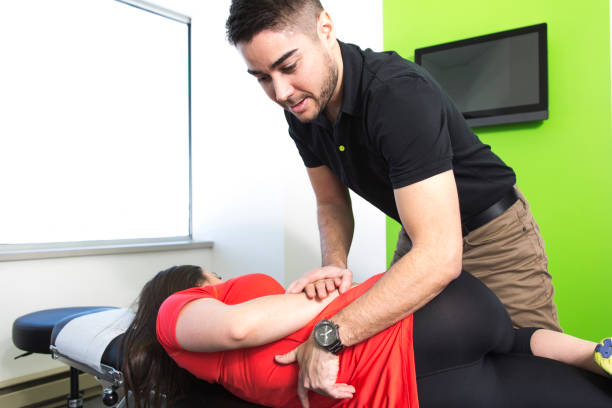WHAT IS JOINT MOBILIZATION? -
A joint mobilization is a treatment which helps to decrease pain, improve range of motion and increase function. A therapist generally performs this technique by stabilizing one part of a joint and applying manual pressure or traction to the nearby part of joint. Depending on the patient’s tolerance and the overall goals of the treatment, several different types of mobilizations may be used. Joints are supported by structures like capsules, ligaments, tendons, cartilage, and muscle fibers, all of which can become injured and get benefit from joint mobilization. It involves the passive movement of specific joints. Therapist uses his or her hands or tools like straps to mobilize an affected joint and get desired treatment. The specific type, speed, and frequency of joint mobilization performed depends on several factors like goal of treatment and type of joint.

WHAT HAPPENS WHEN JOINT HAS LIMITED RANGE OF MOTION? -
Due to limited joint mobility, the nutrition of cartilage starts to decrease, and joint get stiffness. This overuse of joints causes their deterioration. Muscles surrounding the stiff joint become tight and lose their ability to contract and relax sufficiently, thus causing overall dysfunction of the joint. Limited ROM refers to a joint that has a reduction in its ability to move. Motion may be limited because of a problem within the joint, swelling of tissue around the joint, stiffness of the muscles, or pain.
WHAT CAN I EXPECT DURING JOINT MOBILIZATION TREATMENT? -
If you come to see a physiotherapist at clinic with acute or chronic joint pain, then you can first expect to get initial examination. We’ll be assessing and evaluating everything from your range of motion, strength, coordination, pain level, posture which help us for accurate diagnosis. Based on findings, current and past medical history, you can get customized treatment plan to meet your goal of treatment. Since joint mobilization is very effective for a variety of conditions, we decide your plan of care according to condition. To prepare for a physiotherapy session with joint mobilization, be sure to wear comfortable and loose-fitting clothing. Your therapist will need to be able to see or at least easily palpate the specific joint he or she is mobilizing. Your therapist will give you each detail on how to sit or lie during the session, what you should expect to feel, as well as what to prevent for recurring pain or dysfunction.
BENEFITS OF JOINT MOBILIZATION -
- Decreases pain,
- Decreases joint tightness,
- Improves joint mobility
- Decreases muscle spasms
- Decreases muscle tension,
- Induce reflex muscle relaxation,
- Increases functionality.
CONDITIONS TREATED IN JOINT MOBILIZATION -
- Arthritis
- Rotator cuff tears
- Muscle sprains
- Adhesive capsulitis
- Medial or lateral epicondylitis
- Ankle sprains
- Sciatica
- Knee Osteoarthritis
- Low Back pain
- Neck Pain